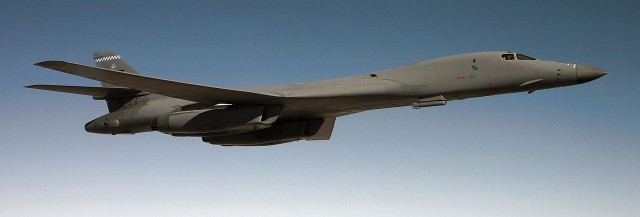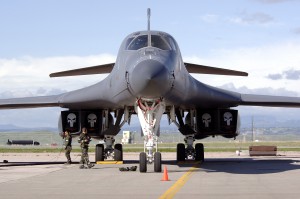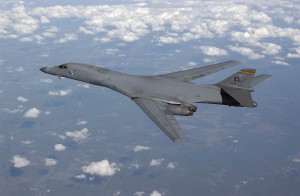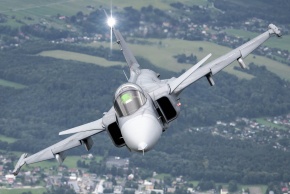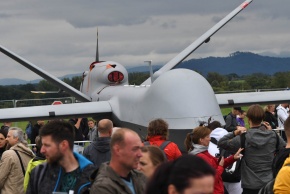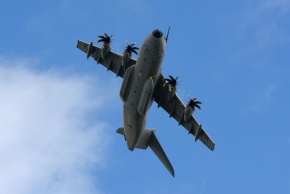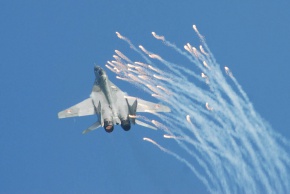B-1B Lancer
The development of the American strategic bomber B-1B "Bone" Lancer dates back to 1965, when the US Air Force (USAF) launched the program AMSA (Advanced Manned Strategic Aircraft), responding to the emerging need for a new intercontinental supersonic bomber with ability to conduct nuclear attacks and pierce enemy´s air defence at low altitudes at high speed.
In June 1970, Rockwell International won the competition with the design of a four-engine aircraft with a variable wing geometry, smoothly transitioning into a fuselage, capable of reaching speeds of up to M = 2.5 at high altitudes. B-1´s crew consists of two pilots and two operators. The first prototype B-1A took off in Palmdale, California on December 23, 1974. The Air Force wanted to buy 250 aircraft, but opposition in the US Congress was not in favour of the plan. In June 1977, President Carter announced that prototype testing would continue only as a safeguard against deteriorating relations with the Soviet Union and maintaining a technical lead. After the arrival of the new president at the White House, Ronald Regan, the card began to turn.
In September 1981, the USAF ordered 100 machines of a modified version - the B-1B. It differed from the previous variant in many aspects. For example, adjustable air inlets to engines have been replaced with new fixed ones. With this intervention, the maximum speed dropped radically to M = 1.25. The aircraft received new avionics, navigation and weapons systems. The chassis and the weapon shafts were also modified for the use of various types of armament.
A relatively large percentage of composite materials are built in the construction of the machine. Pilots control the aircraft using electro-pulse, mechanically backed up control.
The first serial version of the B-1B took off on October 18, 1984. Deliveries of new aircraft began a year later on July 27 and first headed for a unit in Dyess, Texas. Gradually, other squadrons were equipped with them. They are currently operated at Dyess and Ellsworth (South Dakota). The other two machines are set aside for test tasks at Edwards, California.
The B-1 bomber has set several world records in its category in terms of speed, weight, or range. Its first deployment in combat took place in December 1998, the B-1 also engaged in combat operations in Iraq, the former Yugoslavia and Afghanistan, Libya, and Syria.
► Aviantion Archive - B-1B Lancer
Specifications |
|
|---|---|
| Wingspan | 41,80 m |
| Length | 44,50 m |
| Height | 10,40 m |
| Empty weight | 86 183 kg |
| Max takeoff weight | 216 634 kg |
| Maximum speed | 1 324 km/h |
| Service ceiling | 15 240 m |
| Range | 12 000 km |
The page is prepared in cooperation with the Aviation + Cosmonautics magazine of Aeromedia publishing.
The magazine brings news about both military and civilian aviation.
 |
 |



















